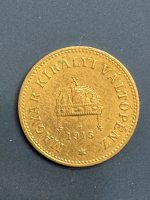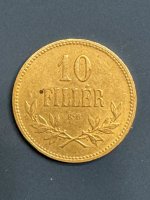- May 16, 2023
- 2,453
- 11,657
- Detector(s) used
- XP Deus II
White's Spectra v3i
Garrett Ultra GTA 1000
Whites Coinmaster
- Primary Interest:
- All Treasure Hunting
I found this in a box of old shaving stuff from my father-in-law. From what I could find, it's Hungarian, but I didn't find anything about whether it's silver or not. It looks and feels like it. The lighting in the room makes it look gold toned, but it isn't. It's about the same size and color as your average old silver dime.




Amazon Forum Fav 👍
Upvote
9








